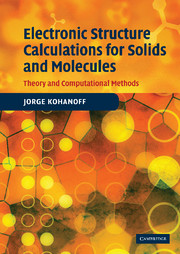Book contents
- Frontmatter
- Contents
- Preface
- List of symbols
- List of acronyms
- Part I Theory
- 1 The problem of the structure of matter
- 2 The electronic problem
- 3 Quantum many-body theory: chemical approaches
- 4 Density functional theory
- 5 Exchange and correlation in DFT: approximations and their performances
- Part II Computational methods
- Index
1 - The problem of the structure of matter
from Part I - Theory
Published online by Cambridge University Press: 29 May 2010
- Frontmatter
- Contents
- Preface
- List of symbols
- List of acronyms
- Part I Theory
- 1 The problem of the structure of matter
- 2 The electronic problem
- 3 Quantum many-body theory: chemical approaches
- 4 Density functional theory
- 5 Exchange and correlation in DFT: approximations and their performances
- Part II Computational methods
- Index
Summary
The description of the physical and chemical properties of matter is a central issue that has occupied the minds of scientists since the age of the ancient Greeks. In their route to dissect matter down to what cannot be divided any further, they coined the term atom, the indivisible. Matter became then a collection of atoms. More than twenty centuries had to pass until the development of a more precise concept of atom, thanks, amongst others, to the systematic studies of Mendeleyev and the establishment in 1869 of the periodic table of the elements (Mendeleyev, 1869). The discovery of the electron in 1897 and the first modern model of the atomic structure by Sir Joseph Thomson were soon refined by his student, Sir Ernest Rutherford, who in 1910 showed that an atom was made of a positively charged small nucleus and a number of negatively charged electrons that neutralize the nuclear charge. Much in the spirit of planetary systems, and drawing from the analogy between gravitational and electrostatic interactions, scientists in the beginning of the twentieth century built an image of the atom that consisted of a number Z of electrons – of elementary charge – e – orbiting around the nucleus of charge Ze.
A number of experimental observations, though, were incompatible with this idea of orbiting electrons. In particular, according to the successful electromagnetic theory, charged electrons in orbital (radially accelerated) motion should radiate energy, thus decelerating and eventually collapsing onto the nucleus. Clearly, such a picture would imply that matter is essentially unstable, in flagrant contradiction with our everyday experience of the very existence of matter.
- Type
- Chapter
- Information
- Electronic Structure Calculations for Solids and MoleculesTheory and Computational Methods, pp. 3 - 14Publisher: Cambridge University PressPrint publication year: 2006

